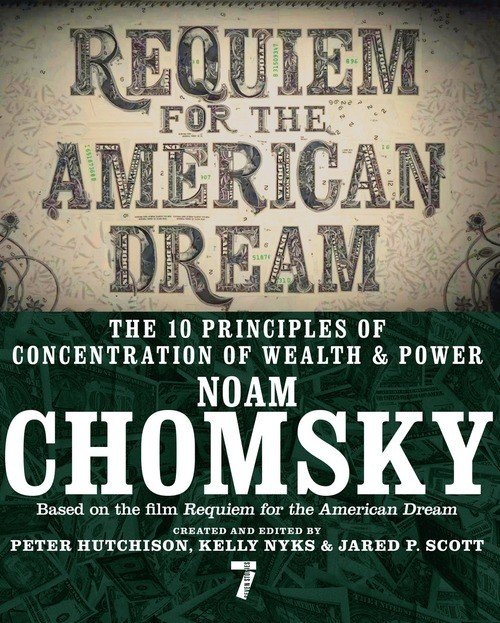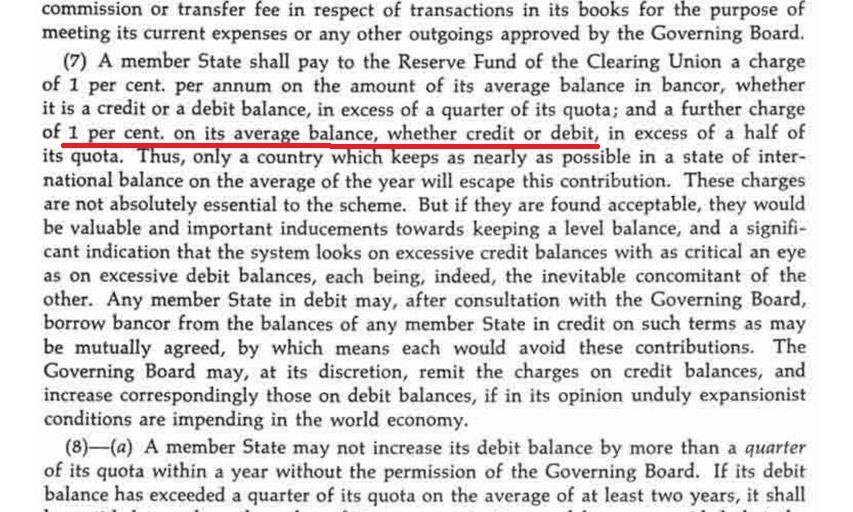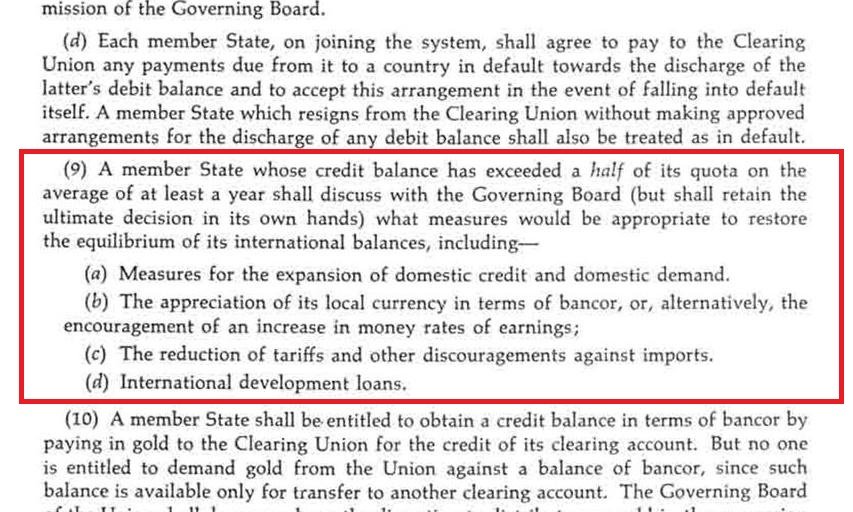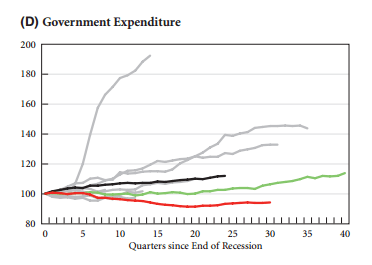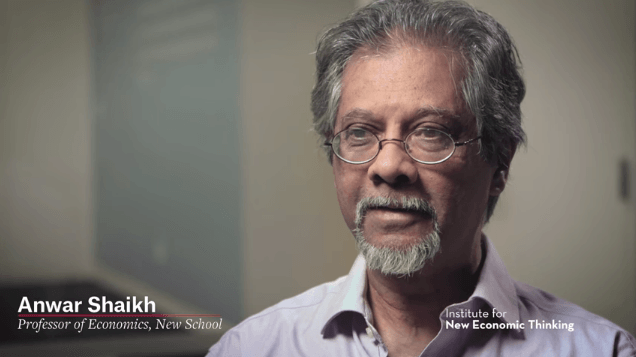Morris Copeland was the discoverer (or inventor?) of the flow of funds approach. The U.S. Federal Reserve publishes the statistics every quarter but is largely ignored. Copeland was of the view that it is essential to get rid of myths in economics. He said:
The subject of money, credit and moneyflows is a highly technical one, but it is also one that has a wide popular appeal. For centuries it has attracted quacks as well as serious students, and there has too often been difficulty in distinguishing a widely held popular belief from a completely formulated and tested scientific hypothesis. I have said that the subject of money and moneyflows lends itself to a social accounting approach. Let me go one step farther. I am convinced that only with such an approach will economists be able to rid this subject of the quackery and misconceptions that have hitherto been prevalent in it.
– in Social Accounting For Moneyflows, in Flow-of-Funds Analysis: A Handbook for Practitioners (1996) [article originally published in 1949]
In an article titled, Some Illustrative Analytical Uses Of Flow-of-Funds Data, in the book, The Flow-of Funds Approach To Social Accounting, published in 1962, he has several interesting things to say about the myths prevalent even among most economists.
Page 196:
The FOF accounts help to dispel various misconceptions in regard to the role of money and of other forms of credit in the income and money circuit. Among these misconceptions are such ideas as that: (1) it is safe to assume that private nonbank cash balances are mostly consumer cash balances; (2) the banking sector is more than a mere financial intermediary, that by itself it can “create” a substantial amount of “money” that can be used to finance a substantial increase in aggregate demand; (3) a government deficit in a particular year or other period can be considered inflationary without stopping to consider whether it represents a fiscal change from the preceding period that tends to increase aggregate demand or whether it occurs at a time when the economy is operating at or near or far below full capacity; and (4) when the government seeks to raise a large amount of money through financial channels to finance a war, one can ignore the fact that an excess of nonfinancial uses over nonfinancial sources of funds for the government means an equal excess of nonfinancial sources over nonfinancial uses of funds for the rest of the economy and a consequent equal amount of money that the rest of the economy will necessarily advance to the government through financial channels.
Note: in (2) above, Copeland is talking of finance of government deficit via sale to banks as compared to sale to the general public and these two have different effects on the money stock. Same below.
Page 197:
It is not easy for us today to imagine what it must have been like to try to understand the workings of our economy in the absence of social accounting information. The workings of those aspects that involve financial transactions seem to have been particularly difficult to understand. Indeed, I think we can say that in the absence of financial transaction social accounting information various misunderstandings were permitted to develop. Let me mention three:
- One of these relates to the role of trade credit in the business cycle. This is a subject that probably received somewhat less attention than it deserved fifty-odd years ago, but it seems to have greatly intrigued H. J. Davenport, and he came up with this curious conclusion about the contraction of credit during a commercial crisis— “Side by side with the diminution of bank credit there is taking place an enforced and inevitable expansion of credit relations between producers and consumers, producers and middle-men, and between middle-men and consumers.”
- During World War I Secretary of the Treasury W. G. McAdoo, among others, was greatly concerned about the possibility that the huge wartime increase in the demand for funds would drive interest rates sharply up. As a matter of fact, interest rates did rise but by no means as sharply as McAdoo had anticipated. Railroad bond yields rose from 4.12 per cent in April 1917 to 4.42 per cent in November 1918. During World War II the yields on long-term United States bonds actually declined.
- There is a view still entertained by quite a number of economists that an increment in the currency and deposit liabilities of the banking and monetary system creates a net addition to the total sources of funds available to finance purchases of GNP and so, a net addition to aggregate demand.
Page 207:
There is still another type of misconception that I hesitated to mention in my opening remarks because it is of a rather subtle nature. I would like to comment on it briefly at this point. Let me indicate its nature by quoting from George Leland Bach’s Economics. An Introduction to Analysis and Policy:
When private spending on consumption and investment falls short of high production and employment levels, the government can increase total expenditures by spending more than it currently collects in taxes. At the extreme, it can finance this net addition by creating new money so as to assure a net addition to private spending. Or it can borrow existing funds from the public, hoping to draw on funds that would not otherwise be spent …
Conversely, when total private spending is too high, with resulting inflation, the government can withdraw funds from the income stream by taxing away more than it spends. At the extreme, it may simply hold or destroy this net surplus. Or it may use the surplus to pay off government debt, hoping that the bondholders will not rush out and spend the funds they receive.
This policy statement seems to imply three propositions that a good many economists have accepted, propositions the validity of which I want to question. The three propositions are:
- A federal government nonfinancial deficit makes for an increase (or surplus makes for a decrease) in aggregate demand.
- A federal government nonfinancial deficit financed by an increase (or a federal nonfinancial surplus resulting in a decrease) in currency outside banks plus demand deposits adjusted makes for a larger increase (or for a larger decrease) in aggregate demand than a deficit financed by the sale to the public of (or a surplus that is used to retire publicly held) interest-bearing federal obligations.
- In considering the effect of a federal deficit (or surplus) on aggregate demand we can afford to neglect the difference between a deficit brought about by an increase in government expenditures and one brought about by a decrease in government receipts (or between a surplus brought about by a decrease in government expenditures and one brought about by an increase in government receipts).
So you see Morris Copeland was the clearest monetary economist at his time.
